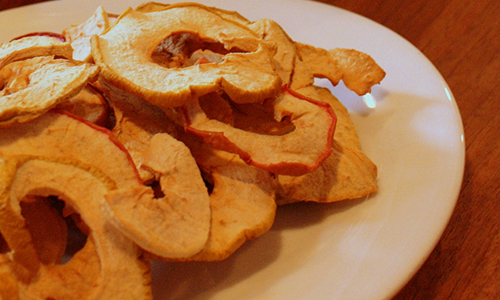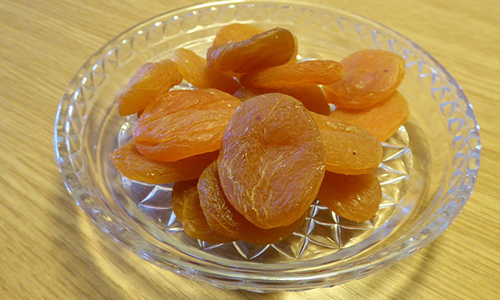Things You Need to Know Before Dehydrating Food
Author

A keen runner, skier and nuts about cycling. Karl lives in Cumbria, where he loves encouraging his two children to follow in his outdoor lifestyle. Whilst out and about keeping active, Karl keeps a diary and shares it with Outdoor Look.
 Dehydrating food is a great way to store and preserve food. Not only it is safe and easy, but also relatively cheaper than buying dehydrated foods. Dehydrating is also rewarding in case you have planned an adventure trip or outdoor camping. You can easily carry the dehydrated food as it retains the nutrients and flavour for a long time. The food has its original taste, but without any moisture. Even, it’s a better tasting and nutritious option than the pre-packaged food.
Dehydrating food is a great way to store and preserve food. Not only it is safe and easy, but also relatively cheaper than buying dehydrated foods. Dehydrating is also rewarding in case you have planned an adventure trip or outdoor camping. You can easily carry the dehydrated food as it retains the nutrients and flavour for a long time. The food has its original taste, but without any moisture. Even, it’s a better tasting and nutritious option than the pre-packaged food.
Most of the foods can be dehydrated, except some dairy and high-fat items. Fruits can be dehydrated raw, but the veggies and meat need to be cooked before dehydrating. All the dehydrated items can be assembled and can be mixed to make scrumptious meals during your overnight backpacking, cycling trip and paddling. It also reduces the preparation time for the meals.
- Know your dehydrator: there are generally three types of dehydrators: bottom fan, top fan, and back fan. Most people recommend using a back fan dehydrator since it allows even drying of the food, unlike the top fan and bottom fan dehydrator. However, even in a back fan, the trays need to be moved around to ensure an even and consistent drying.
- Choosing dehydrator: a dehydrator cost depends upon the trays and the features in it. Yet, the most important thing that you must look out for are a fan and temperature settings. A fan would be needed for an equal distribution of the heat throughout the tray. Different temperature settings would be needed to dehydrate different kinds of food.
- Use your air dry or oven: not many people know that if they don’t have the dehydrator, they can use an oven or air dry it. Most of the leafy green vegetables and herbs such as mint, lettuce, sage, oregano, lemon balm or even carrot tops can be dried by hanging them up in a dry room. Prevent the herbs from direct sunlight. It can take a few days to a week to fully dry them up.
- Dehydrate only one food type at a time: the idea of dehydrating one food at a
 time is because the content in one can affect the taste of the other. For example, you can do tomatoes and hot peppers together, but this will make the tomatoes taste spicy. Similarly, Brassica should be dehydrated alone, otherwise its sulphur taste will get infused into other foods. Fruits can be dehydrated together, but they should not be mixed with strong flavoured food. Foods that require same temperature can also be dehydrated together.
time is because the content in one can affect the taste of the other. For example, you can do tomatoes and hot peppers together, but this will make the tomatoes taste spicy. Similarly, Brassica should be dehydrated alone, otherwise its sulphur taste will get infused into other foods. Fruits can be dehydrated together, but they should not be mixed with strong flavoured food. Foods that require same temperature can also be dehydrated together.
Proper storage can help your dried fruits last up to five years and vegetables up to ten years. Even, the dried-up meat and chicken can last about a year if you have stored them in the freezer. To preserve them for longer time, use vacuum-sealed bags. Store the meats and seafood in the freezer in a vacuum sealed bag. If stored in a cool, dark place, try consuming them within a month. Vacuum sealing and freezing works best for preserving meat and seafood.
Author

A keen runner, skier and nuts about cycling. Karl lives in Cumbria, where he loves encouraging his two children to follow in his outdoor lifestyle. Whilst out and about keeping active, Karl keeps a diary and shares it with Outdoor Look.
Categories
- Sport (28)
- Product Reviews (3)
- Team Outdoor Look (7)
- Mike Wild (2)
- Mike Payton (2)
- Suse Hammond-Pears (3)
- Snowboarding (12)
- Latest Offers (105)
- Shop Talk (1)
- Competitions (7)
- Walking (413)
- Lifestyle Fashion (8)
- Travel (86)
- Kit Guides (176)
- Workwear Clothing (6)
- Safety Workwear (4)
- Health/Fitness (289)
- Skiing (91)
- Great Outdoors (1316)
- Cycling (92)
- January 2025
- December 2024
- November 2024
- October 2024
- September 2024
- August 2024
- July 2024
- June 2024
- May 2024
- April 2024
- March 2024
- February 2024
- January 2024
- December 2023
- November 2023
- October 2023
- September 2023
- August 2023
- July 2023
- June 2023
- May 2023
- April 2023
- March 2023
- February 2023
- January 2023
- December 2022
- November 2022
- October 2022
- September 2022
- August 2022
- July 2022
- June 2022
- May 2022
- April 2022
- March 2022
- February 2022
- January 2022
- December 2021
- November 2021
- October 2021
- September 2021
- August 2021
- July 2021
- June 2021
- May 2021
- April 2021
- March 2021
- February 2021
- January 2021
- December 2020
- November 2020
- October 2020
- September 2020
- August 2020
- July 2020
- June 2020
- May 2020
- April 2020
- March 2020
- February 2020
- January 2020
- December 2019
- November 2019
- October 2019
- September 2019
- August 2019
- July 2019
- June 2019
- May 2019
- April 2019
- March 2019
- February 2019
- January 2019
- December 2018
- November 2018
- October 2018
- September 2018
- August 2018
- July 2018
- June 2018
- May 2018
- April 2018
- March 2018
- February 2018
- January 2018
- December 2017
- November 2017
- October 2017
- September 2017
- August 2017
- July 2017
- June 2017
- May 2017
- April 2017
- March 2017
- February 2017
- January 2017
- December 2016
- November 2016
- October 2016
- September 2016
- August 2016
- July 2016
- June 2016
- May 2016
- April 2016
- March 2016
- February 2016
- January 2016
- December 2015
- November 2015
- October 2015
- September 2015
- August 2015
- July 2015
- June 2015
- May 2015
- April 2015
- March 2015
- February 2015
- January 2015
- December 2014
- November 2014
- October 2014
- September 2014
- August 2014
- July 2014
- June 2014
- May 2014
- April 2014
- March 2014
- February 2014
- January 2014
- December 2013
- November 2013
- October 2013
- September 2013
- August 2013
- July 2013
- June 2013
- May 2013
- April 2013
- March 2013
- February 2013
- January 2013
- December 2012
- November 2012
- October 2012
- September 2012
- August 2012
- July 2012
- June 2012
- May 2012
- April 2012
- March 2012
- February 2012
- January 2012
- December 2011
- November 2011
- October 2011
- September 2011
- August 2011
- May 2010
- April 2010
- March 2010
- February 2010
- January 2010
- November 2009
- October 2009
- September 2009
Submit a Comment